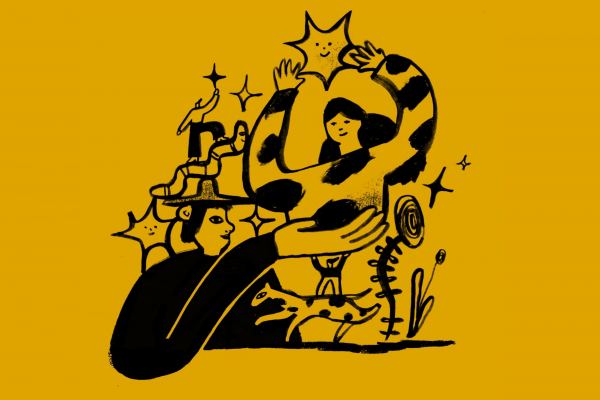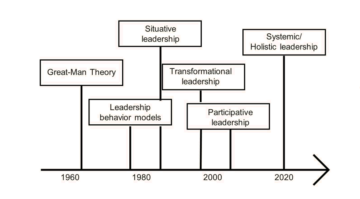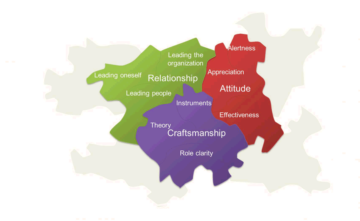Management training and executive coaching
Leading others starts with self-reflection and self-guidance. What are my resources? What are the impressions and beliefs that shape my leadership and cooperative behavior?
Learn more
How have leadership styles been defined so far and what can I, as a manager, derive from them for myself and for my work?
Division of labor, complex manufacturing processes and the organization associated with it raise the question of effective leadership. In the last 60 years alone, we have seen a variety of leadership theories and concepts. The inexorable social changes and the economic changes associated with it, has brought about and continues to bring about new ways of understanding leadership. Different theories have yielded different perspectives and have thus brought relevant qualities of leadership into the discussion. Before we turn to these and classify them, it is worth taking a meta-look at the higher understanding of leadership.
What is leadership?
Viewed quite soberly, leadership in a company is the conscious and goal-oriented influence of executives on their employees to solve work tasks. This includes the formulation of the underlying goals and the empowerment of those involved to achieve those goals.
While the outer dimension is dedicated to the management of tasks, the inner dimension regulates the behavior within the respective group or organizational unit. When understood as an intentional exertion of social influence, leadership becomes a group phenomenon.
If you look at both dimensions together, an understanding of leadership emerges as an aggregate of communication processes, the effect of which, in turn, is intended to ensure that the company achieves its goals.
What are leadership styles and how have they shaped the understanding of leadership up to now?
How we lead and are led is largely responsible for the success of a company. The leadership style comes to the fore in this context. This term summarizes the behavior of managers towards employees. As persistent and recurring patterns of situational and coherent leadership behavior, leadership styles also provide information about corporate culture and the way people are portrayed and perceived in a company. The development of leadership styles up to now has resulted in a wealth of approaches that we can use and adapt for our own reflection.

In the 1960s, the “Great Man Theory” was accepted as the measure of all things with regard to leadership style. This power-based, hierarchical construct was based on a perfect “leadership prototype”, the “born leader”. From today’s perspective, it is regarded as a one-dimensional approach that took leadership qualities for granted and focused mainly on the characteristics of the person.
So it’s no wonder that people turned towards other approaches in the 70s and 80s. The new principle was: Everyone has the potential to be a manager. Leadership behavior models attempted to describe a “guide” for effective leadership behavior. They differentiated between task-oriented and person-oriented behavior.
When the context around employees and managers was included in the consideration, the approach of situational leadership emerged and pursued the differentiation between person-oriented and task-oriented behavior. The approach also fitted into the still hierarchical view of the manager-employee relationship, which was defined by the action of the manager “from above”.
Leading means relationship management!
With the approach towards transformational leadership, the rigid “top-down” view of the interaction between manager and employee shifted. According to this theory, leadership should become something two-sided — a relational phenomenon that changed both sides. Meeting at an emotional level and conveying a shared vision of work moved into the center of the leadership style agenda. Supported by a new understanding about the empowerment of employees, staff were no longer viewed as a homogeneous group, but as individuals with personal strengths and needs. This potential was to be promoted and, by means of empowerment, help work towards the common achievement of the (company) visions.
Participative leadership was the name of the next evolutionary stage in leadership style. It took up the idea of“empowerment” and brought the participation of employees into the entire decision-making process. By shifting responsibility, managers and employees should be able to meet on an equal footing.
The current view of leadership sees the organization as a living ecosystem and focuses on self-efficacy and self-realization at work. The systemic perspective focuses less on the individual people and things than on the spaces and lanes between them — the relationships. Feedback formats and the holistic view of business processes are trademarks of a holistic approach that also includes customers, suppliers and larger society as players in the corporate organism. In a volatile and rapidly changing world, problems can in this way be identified at an early stage and used as an opportunity. Greetings from New Work.
A ground plan for leadership? The leadership map!
From the many approaches to leadership, we can derive various aspects of this complex topic for ourselves. The Great Man theory directs our attention to the characteristics of the leader, while later approaches focus more on the conduct and behavior of this person, or on the situation-dependency of leadership.
More recent approaches emphasize the relationships between people and focus on self-realization.
A ground plan or map can be helpful for orientation and simplified application of the previous approaches. The integration of the different perspectives on this topic leads us to three dimensions of leadership: Relationship, attitude and craft.

Leadership as a relationship
Leadership does not happen in a vacuum. It creates a relationship between the actors in daily activities on the real level: Organization, employee and manager. Self-management plays a central role here, because a manager always functions as a role model. In addition to clear self-reflection, it should also have solid self-organization.
Personnel management is the next building block in this dimension. It is important to recognize people as the most important resource in the company in the long term and to build a bridge between their needs and the goals of the organization.
Competences and potentials can be promoted by the distribution and organization of the workload. Contact and feedback are the keys to this competence.
Since the effort made is aimed at achieving the relevant corporate goals, organizational management should not be neglected. This term includes the critical “why” question. Setting meaning will lead to enthusiasm and motivation. Participatory approaches make it possible to help shape the organization to a large extent and are thus able to bring together the different interests of those involved, towards a common direction.
Leadership as a craft
Leadership is a profession, not some sideline. This core activity of an organization provides orientation and requires tools and quality standards. The standards created in this way provide added security and clarity to the everyday business, not only to the organization and employees, but also to the manager.
Practical theories are to be considered the first components of the manual repertoire. They enable the manager to better understand behavioral patterns in difficult situations. In this way, decisions can be better justified. However, the theory should not become a dogma; rather, through the knowledge of observable relationships, it should create awareness in managers and thus prepare them for the appropriate handling of analogous issues.
Theory also equips the manager with effective tools. Methodology used in a manner appropriate for the situation often determines the healthy functioning of an organization. As a result, managers feels able to perform their tasks competently and can also develop a clear understanding of their own role and the behavior associated with it. This represents an important anchor point for the organization and the employees, because stability and orientation can only be transmitted by those managers who can clearly classify themselves within a company.
Leadership as an attitude
Leadership is not a one-off “feat” or a project that one has to complete. It is an ongoing task in the organization. It can be equated with the personal attitude that is always needed and demonstrated when, for example, a situation does not allow preparation and managers act outside of their comfort zone.
Alertness is required in order to adequately deal with an unexpected, critical situation. Alertness is the concentrated and conscious absorption of information from the external and the internal world. It is the sensitivity to relationships, feelings and conflicts that can determine the course of, or problem-solving angle in, a situation.
While alertness can give us signs of future progress, it is effectiveness that brings the courage to act. Managers work in their environment through their actions and thus set impulses for shaping the context of all those involved.
On the journey to meaningful work and self-fulfillment in the workplace, hardly any component is as important as appreciation. It is the ability to recognize circumstances in the environment, skills within the organization or the experiences of employees and being able to use them in a targeted manner. With an appreciative attitude, managers generate meaning in their environment and create space for the further development and advancement of the internal potential of employees.
Leadership — love for people
However, none of the theories, instruments and maps do us any good if we overlook the most important thing in connection with management responsibility — people.
“You have to love this tournament if you want to win here. You have to love it in spite of the aircraft noise above you, you have to love it in spite of the hysterical spectators, in spite of the concrete cauldron and in spite of the terrible heat. Just like Jimmy Connors loved it for eighteen years. If you can’t love it, you better get out of here.”
(Boris Becker, quoted by Reinhard K. Sprenger: Prinzip Selbstverantwortung)
The framework conditions will never be perfect. We will never find a level playing field. So if we don’t like and accept people in all their facets, if we can’t love ourselves and our fellow human beings, then we should avoid or leave the playground of leadership. The consequences for ourselves and others can be devastating.
This affection for our own human abilities, skills, but also inadequacies is the basis, the foundation on which the theories and tools can be built in the first place. Only through the reference and the relationship between people can something emerge that can also help bring about self-realization, self-determination, thus ensuring that corporate goals are met, now and in the future, when faced with new challenges.
Self-check
Bibliography
Ruth Seliger
Frederic Laloux
Reinhard K. Sprenger
Leading others starts with self-reflection and self-guidance. What are my resources? What are the impressions and beliefs that shape my leadership and cooperative behavior?
Learn morePersonality and career development: These are processes in which established patterns and beliefs are challenged. It is about boldly letting go of old ones and building new ones.
Learn moreLeadership is relationship work — also hybrid. How you encourage encounters — even remotely — is an inspiring experience. Hybrid leadership needs good preparation, clarity and attention to the other person.
Learn more